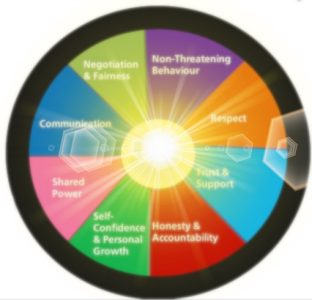iNarender Chada “Perspectives in organizational Development” (2007) First Edition, Galgotia Publications Pvt.
Ltd.,New Delhi Pg. 529
iiMullins Laurie “ Management and Organizational Behaviour” (2005) Seventh Edition, Pearsons Educational Ltd, EnglandS
iiiDaniel and Steve “Enhancing the effectiveness of Work Groups and Teams” Vol:7 No:3, Association of Psychological Science Pg.77
iv Robbins, S. P. (1989). Organizational Behavior: Concepts, Controversies, and Applications (Fourth Edition ed.). New Jersey: Prentice Hall
vGriffin and Moorehead “Organizational Behaviour – Managing Peopla and Organisation” (2008) Tenth Edition, South Western Cenage Learning, USA, Pg:537
viHackman J.R. & Oldham, G.R. (1976). “Motivation through the design of work: Test of a theory.” Organizational Behavior and Human Performance, 16:250-279.
viiTaylor, John B. (1979), ‘Staggered wage setting in a macro model’. American Economic Review, Papers and Proceedings 69 (2), pp.108–13. Reprinted in N.G. Mankiw and D. Romer, eds., (1991), New Keynesian Economics, MIT Press.
viii Warr P.B., Cook J., Wall T.D. (1979) . Scales for the measurement of some work attitudes nd aspects of
Psychological well-being. Journal of Occupational Psychology, Vol. 52, 129-148.
ix Mirvis and Lawler “Accounting for the Quality of Work-Life”(1984) Journal of Organizational Behavior Vol:5
No:3 John & Wiley Ltd
x Baba, VV and Jamal, M (1991) Routinisation of job context and job content as related to employees quality of
working life: a study of psychiatric nurses. Journal of organisational behaviour. 12. 379-386.
xi Ellis N & Pompli A 2002 Quality of working life for nurses. Commonwealth Dept of Health and Ageing.
Canberra.
xiiSirgy, M. J., Efraty,, D., Siegel, P & Lee, D. (2001). A new measure of quality of work life (QoWL) based on need
satisfaction and spillover theories. Social Indicators Research, 55, 241-302.
xiiiBearfield, S (2003) Quality of Working Life. Aciirt Working paper 86. University of Sydney. www.acirrt.com
xiv Herzberg F, Mausner B, & Snyderman B., (1959) The Motivation to Work. New York:Wiley.
xv Walton, R.E., 1975. Criteria for Quality of Working Life. In Davis, L.E., Cherns, A.B. and Associates (Eds.) The
Quality of Working Life, The Free Press, New York, NY, 1: 91- 104
xviVan Dyne, L., Cummings, L.L., & McLean Parks, J. (1995). Extra-Role behaviors: In pursuit of construct and definitional clarity. In L. L. Cummings & B. M. Staw (Eds.), Research in Organizational Behavior
xviiMardani Hamoule, Marjan & Haede Haidari,” The Relationship between Quality of Working Life with Organizational Citizenship Behavior of Office of Education Staff in Rasht City ”, Journal of Basic and Applied Scientific Research , 2012, p3547-3551.
xviii Ahmadi, Feraidoon.(2009). “Identify the factors affecting the development of organizational citizenship behavior and provide a template for the National Iranian Oil Company”, thesis in administrative manage ment, Tehran University, Pardis Qu, http://www.textroad.com/pdf/JBASR/J.%20Basic.%20Appl.%20Sci.%20Res.,%202%284%293547-3551,%202012.pdf
xixWaitayangkook, chalermpol (2003) “quality of work life: interactional perspective with thai aspect”, university of North texas: Bangkook, Thailand, pp.8-14.
xxBarling, Julian (2003) high -Quality work, job satisfication, and oeeu “pational injuties” journal of Applied psychology, vol 88, No 2, pp.173-177.
xxiDonalson, slewat (2000) “health behavior : quality of work life and organizational effectiveness in the lunbe industry “published by : sage publication, pp.122-130.
xxiiKim, S. (2006) «Public Service motivation and organizational citizenship behavior in Korea, International journal of manpower, 27(8). 714-722.
xxiiiDennis W. Organ, Philip M. Podsakoff, and Scott B. MacKenzie “Organizational Citizenship Behavior:
Its Nature, Antecedents, and Consequences” (2006) Sage Publications







